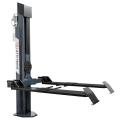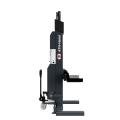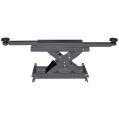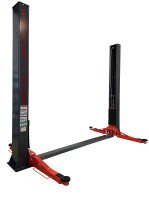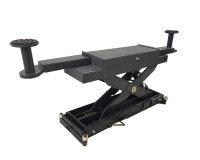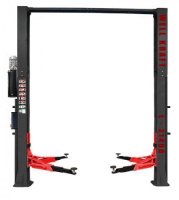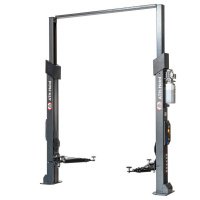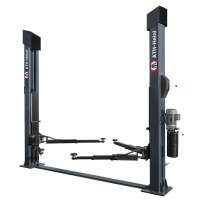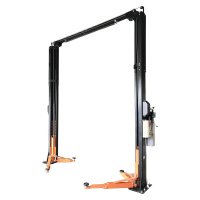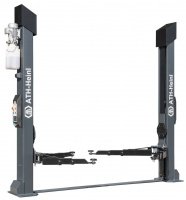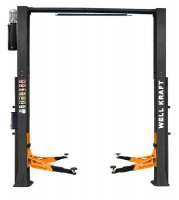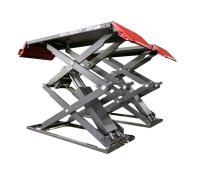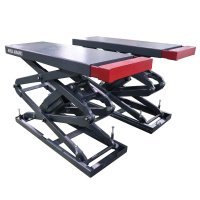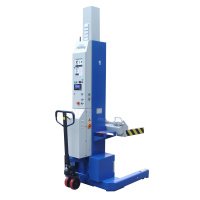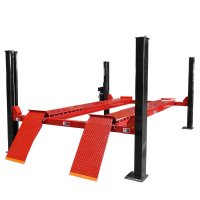Lifting equipment
More about Car Lifts
No auto service can do without special lifting equipment. Car lifts provide an easy and convenient way to perform repair and maintenance work on vehicles.
The main function of a lifting device is to raise a vehicle to the required height and ensure its secure fixation. In auto repair shops, tire shops, and service centers, car lifts are often used in combination with other types of equipment, which greatly simplifies the process of repair and diagnostic work on motor vehicles.
Additional Information:
- Hydraulic Lifts: This type of lift operates on a hydraulic system and can lift even heavy vehicles to a significant height.
- Electric Lifts: These devices are mainly used for light work and smaller vehicles. They operate on electricity and are convenient for small auto service centers.
- Pneumatic Lifts: This type of lift uses compressed air to raise the vehicle. They are lightweight and compact, but not always suitable for large vehicles.

Choose lifting equipment that suits your needs to streamline the process of car repair and maintenance.
-
Car Lift — is specialized equipment designed to facilitate repair and maintenance work on various types of vehicles. These devices are intended for lifting vehicles, including passenger cars, jeeps, minivans, microbuses, buses, trucks, as well as agricultural and special equipment. They allow you to lift and hold vehicles at the required working height, providing mechanics and auto technicians access to the lower part of the vehicle for various types of repair work.
-
Car lifts — can be used independently or in conjunction with other types of equipment and tools, such as transmission stands, oil change units, and much more. This allows auto services and garages to save space and efficiently manage the repair process.
-
Car lifts — come in different types, including hydraulic, electric, and pneumatic, and the choice of a specific type depends on the needs of the auto service and the type of work being performed.
Single-Post Lift
Its basis is a load-bearing post. The main advantage of this type of car lift is its small footprint.
They are differentiated by type:
- stationary and mobile.
- electromechanical and electro-hydraulic.

Typically, the car is raised on supports placed on one side.
Two-Post Lift
A two-post car lift - is a rigidly fixed structure for stationary installation, secured to the floor surface with anchor bolts. It is designed to lift and hold a motor vehicle in a raised position at a specific height for the time required for repair or vehicle maintenance and can be used in conjunction with other equipment and tools.

Two posts with brackets allow lifting vehicles with a weight of up to 7 tons, depending on the specific lift model. The brackets can rotate up to 180 degrees, allowing for the maintenance of a wide range of vehicles with different wheelbases.
A two-post car lift , in turn, is divided into:
-
By Drive Type:
- Electro-hydraulic.
- Electromechanical.
- Symmetrical - front and rear arms of the same length.
- Asymmetrical - rear arms longer than the front ones.
- Symmetrical column arrangement.
- Asymmetrical column arrangement.
- Bottom synchronization - synchronization cables and hydraulic hoses run below between the columns and are covered by a special movable plate.
- Top synchronization - synchronization cables and hydraulic hoses run above between the columns - a "clean floor."
Electronic. The synchronicity of the lift carriages' operation, each with its hydraulic cylinder, is ensured by a cable or chain running from one column to another. The synchronization mechanism does not bear any load. Each of the lift columns is equipped with a safety latch or electromagnet lock, preventing spontaneous descent of the lift.
Foundation requirements for two-post, and especially single-post lifts, are very stringent in terms of the design and strength of the concrete floor.
The design of the lift may include a floor frame, which is essential in the case of a weak floor.

Four-Post Lift
-
The described device has four columns with attached platforms. The platform is designed to facilitate the servicing of low-clearance vehicles, which are vehicles with a low distance from the bottom to the road surface. This makes the device convenient for lifting and working on such cars.
-
The feature of this lift is that it can be equipped with various types of platforms depending on the user's needs. Platform options may include:
-
A platform with an additional micro-lift, allowing for increased lifting height or lifting in hard-to-reach areas.
-
A smooth platform that provides a working surface without additional elements, which can be useful for various types of repair work.
-
A platform designed to work in conjunction with wheel alignment stands, such as wheel alignment and camber check stands.
- At floor level or "in-ground" - with the platform's lowest position at floor level.
- Above the floor - with the platform's lowest position above the floor. In this installation method, special drive-on ramps are used to drive the car onto the lift.
Additionally, the lift can be installed in various ways, depending on the operating location and specific needs. This provides users with flexibility in choosing the best option for their tasks and conditions.

Requirements: for the foundation work are not as "rigid" in terms of strength as for two-post lifts; the load is distributed across four columns instead of two. But at the same time, it requires exceptional precision "in level." This is necessary to eliminate the tilt of the platforms, simplify the leveling of the lift, and, if used in conjunction with wheel alignment stands, facilitate the calibration procedure for the stand. Also, thanks to the presence of four columns, the load capacity of these lifts can reach up to 25 tons.
Scissor Lifts
The advantage of these lifts is space-saving in the non-operational state when installed with pit recesses. The equipment has hydraulic power drives, ensuring quiet and reliable operation.

The synchronization of the lift's sides is ensured by electronic automation, such as photo sensors, or through high-precision hydraulics. The design can be used in conjunction with equipment for performing other operations, such as adjusting wheel alignment angles.

Plunger Lift
This design is exceptionally simple. The brackets are attached to the plungers of the hydraulic cylinders, which are installed vertically. However, a plunger lift requires a complex and costly recessed foundation and the highest quality hydraulics - unlike other lifts, it does not have mechanical locking stoppers.

The design can be of two types: with hydraulic power drives installed on the ground and with their recess into the floor. In the latter case, a significant working area is saved since there are no parts protruding above the floor surface. When using the lift, the car can be accessed from any side. A portable control unit allows the lift to be used at a car wash.

There are various modifications: one-plunger, two-plunger, and four-plunger designs that can be combined using synchronization schemes, allowing for the servicing of oversized vehicles. For one-plunger lifts, there are various above-ground structures: X-shaped, H-shaped.
To understand which lift you need, select the lift category and familiarize yourself with the detailed description and technical specifications. You can also contact our managers who will save you time and provide comprehensive information about car lifts.

